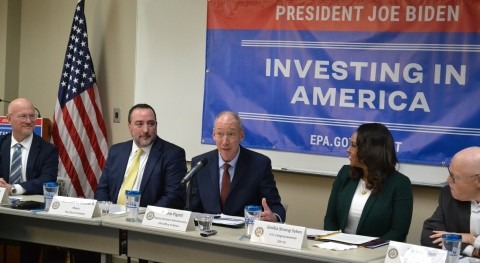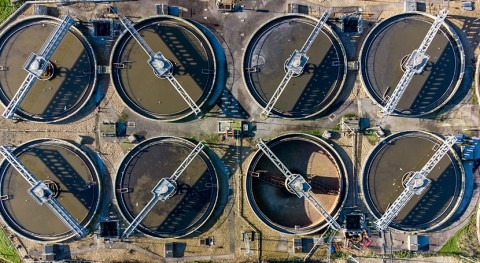Senior Trump Administration officials hosted a roundtable in Baton Rouge, Louisiana, United States, focused on identifying opportunities to reduce nutrient losses across the country.
“The Trump Administration’s nutrient roundtable discussion produced a rich conversation on the challenges and opportunities that lie ahead for reducing nutrient losses in the Mississippi River Basin,” said David Ross, Assistant Administrator for the U.S. Environmental Protection Agency’s Office of Water. “EPA looks forward to convening more of these roundtable discussions in the future so that we can better focus federal resources to address this environmental challenge and deliver more effective results for the American people.”
“The U.S. Department of the Interior and the U.S. Geological Survey play an important role in the federal family partnership with the Mississippi River,” said Tim Petty, Assistant Secretary for Water and Science for the U.S. Department of the Interior.
“USGS’s long history of nutrient monitoring and modeling provides an essential foundation for delivering new science and tools for federal, state, tribal and local decision makers and communities,” said Jim Reilly, Director of the U.S. Geological Survey.
The roundtable was held on May 15, 2019, in advance of the Hypoxia Task Force meeting and attended by more than 40 representatives from state and local governments; non-governmental organizations; industry associations; and senior leadership from the U.S. Department of Agriculture, U.S. Department of the Interior, U.S. Environmental Protection Agency, and the National Oceanic Atmospheric Administration. During the roundtable, administration officials provided updates on coordinated nutrient reduction efforts and participants explored new opportunities for market-based coordination and federal support for ongoing state nutrient reduction activities.
Following the nutrient roundtable discussion, EPA co-chaired the Hypoxia Task Force public meeting, where the federal and state members of the Hypoxia Task Force heard updates on gulf science, new tools for tracking conservation actions across the basin, and innovative financing and market opportunities to reduce excess nutrients in the Gulf of Mexico and the Mississippi River Basin. The role of the Hypoxia Task Force is to provide executive level direction and support for federal and state work with partners and public stakeholders to reach ambitious goals for reducing excess nutrients in the Mississippi River/Gulf of Mexico Watershed.
During the meeting, Hypoxia Task Force co-chairs David Ross and Iowa Department of Agriculture Secretary Mike Naig signed a Memorandum of Understanding that renews the collaboration between the Hypoxia Task Force and the Land Grant Universities in the Task Force states. This agreement will continue the partnership between the Task Force and Southern Extension and Research Committee number 46 (SERA-46), which is made up of research and extension specialists from the 12 Task Force Land Grant Universities, and provides collaborative opportunities for in-state and cross-state research and extension advancements in the Mississippi River Basin.
Background
Nutrient pollution is one of America's most widespread, costly, and challenging environmental problems and is caused by excess nitrogen and phosphorus in the water. This excess nitrogen and phosphorus can travel to coastal areas where the effects of the pollution are felt in the form of algae blooms, hypoxic zones, and other surface water quality concerns. The 2018 Gulf of Mexico hypoxic zone or “dead zone” measured 7,040 square kilometers (2,720 square miles).
Under the Trump Administration, EPA is focusing its attention on reducing nutrient losses through enhanced federal and state coordination and stakeholder engagement. In December 2018, EPA and USDA issued a letter to state co-regulators encouraging a reinvigoration of state, tribal, and federal efforts to reduce excess nutrients in waterways, with a focus on market-based and other collaborative approaches. In February 2019, EPA signed a Memorandum of Understanding with the Water Research Foundation to develop affordable technologies to recycle nutrients from livestock manure and issued a new water quality trading policy memorandum intended to promote nutrient reductions and water quality improvements at a lower cost using market-based mechanisms.



















